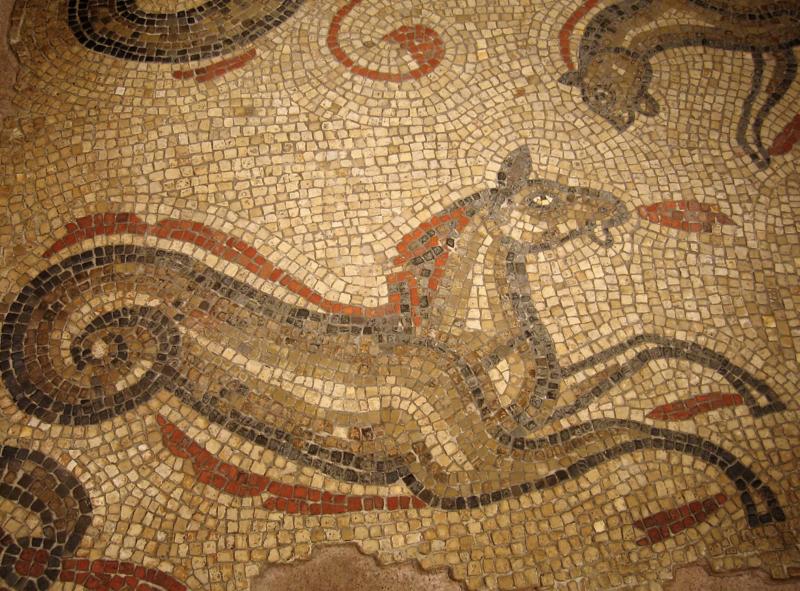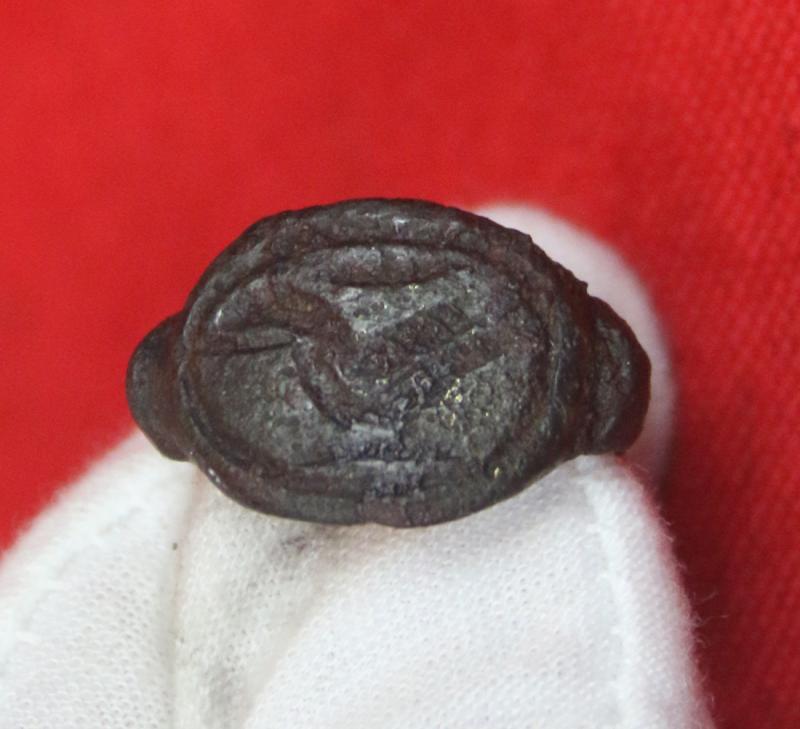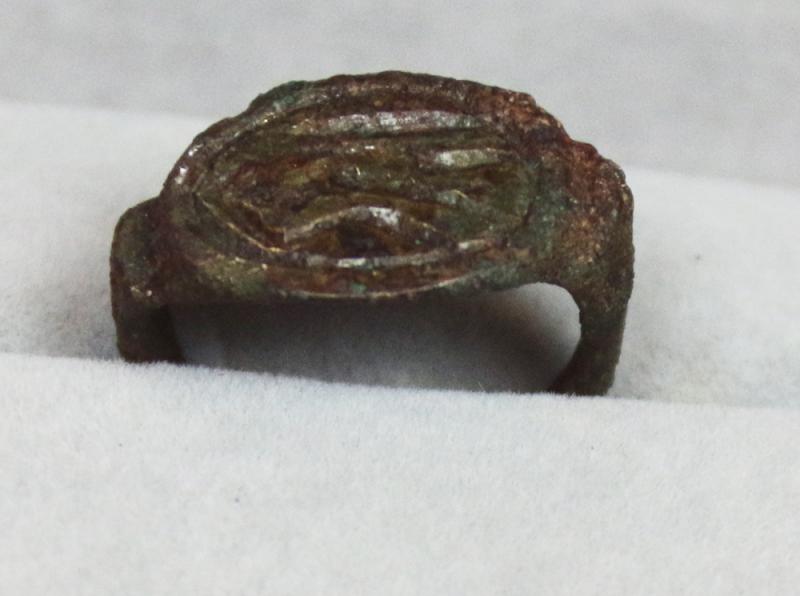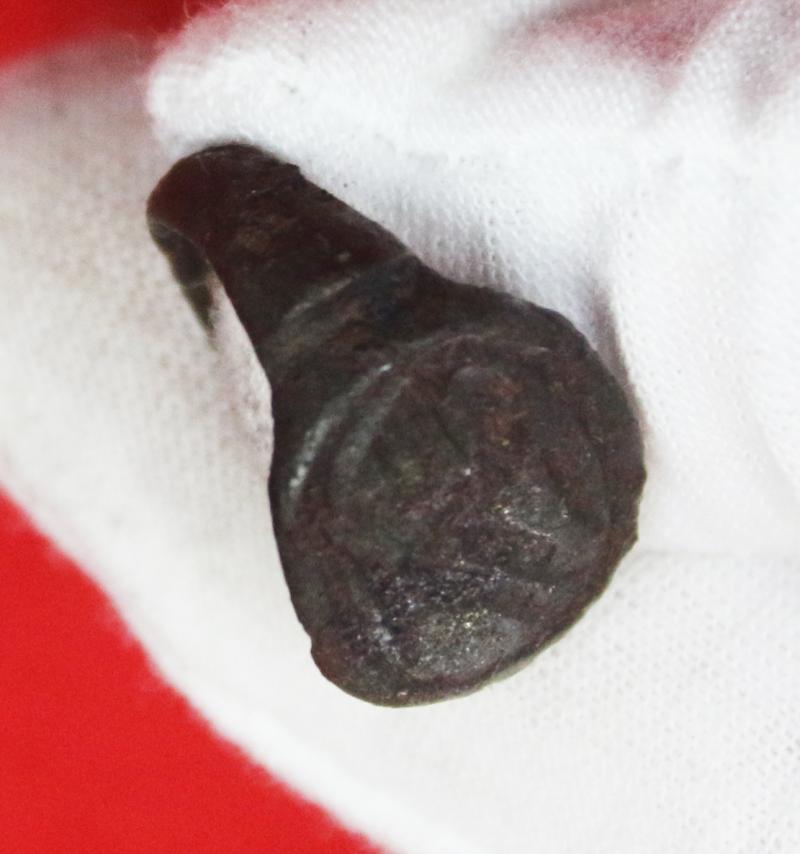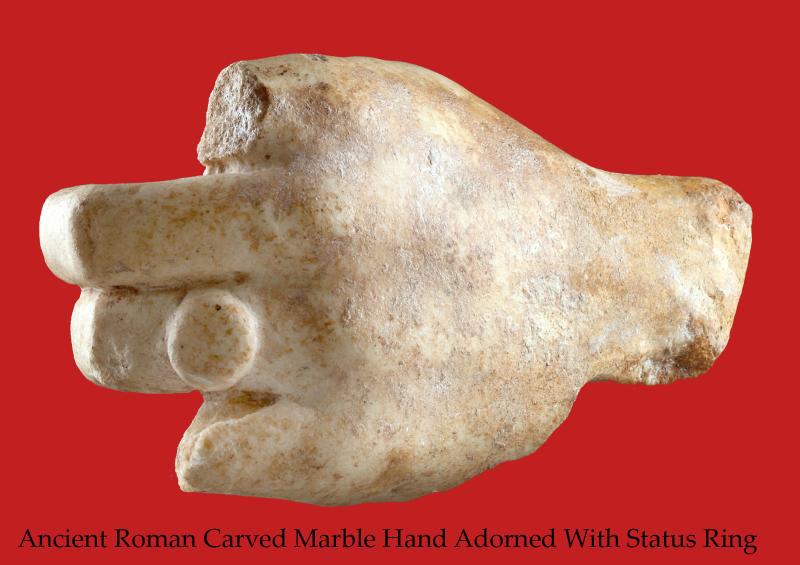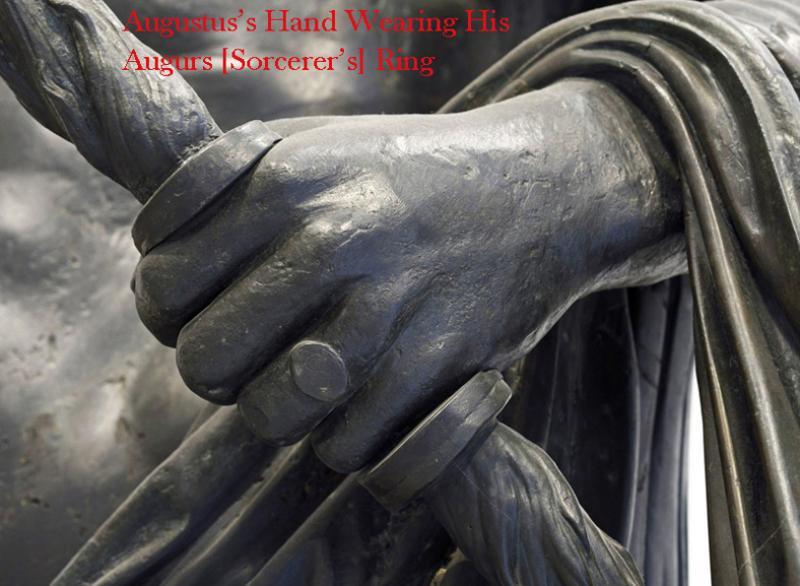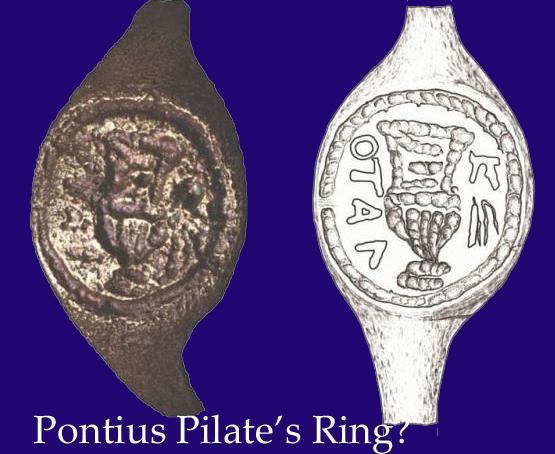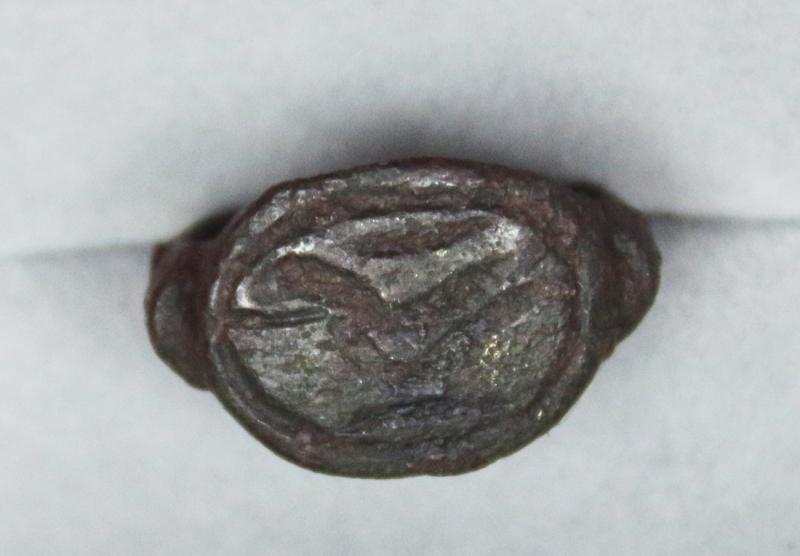Roman Ist Century AD Hippocampus Intaglio Engraved Bronze 'Status' Ring. Around 2000 Years Old. From The Time Of the Divine Augustus, The First Emperor of Rome
Henig type Xb bronze Roman ring around 1900 -2000 years old. In copper bronze with great, natural age patination
In the Iliad, Homer describes Poseidon, god of horses, earthquakes, and the sea, driving a chariot drawn by brazen-hoofed horses over the sea's surface, and Apollonius of Rhodes, describes the horse of Poseidon emerging from the sea and galloping across the Libyan sands.8 This compares to the specifically "two-hoofed" hippocampi of Gaius Valerius Flaccus in his Argonautica: "Orion when grasping his father’s reins heaves the sea with the snorting of his two-hooved horses." In Hellenistic and Roman imagery, however, Poseidon (or Roman Neptune) often drives a sea-chariot drawn by hippocampi. Thus, hippocampi sport with this god in both ancient depictions and much more modern ones, such as in the waters of the 18th-century Trevi Fountain in Rome surveyed by Neptune from his niche above.
The engraved intaglio seal ring was important for displaying the Roman's status. For example Tiberius, who was after all left-handed according to Suetonius, thus displays a ring in his bronze portrait as the Pontifex Maximus: The complete Roman Empire had around a 60 million population and a census more perfect than many parts of the world (to collect taxes, of course) but identification was still quite difficult and aggravated even more because there were a maximum of 17 men names and the women received the name of the family in feminine and a number (Prima for First, Secunda for Second…). A lot of people had the same exact name.
So the Roman proved the citizenship by inscribing themselves (or the slaves when they freed them) in the census, usually accompanied with two witnesses. Roman inscribed in the census were citizens and used an iron or bronze ring to prove it. With Augustus, those that could prove a wealth of more than 400,000 sesterces were part of a privileged class called Equites (knights) that came from the original nobles that could afford a horse. The Equites were middle-high class and wore a bronze or gold ring to prove it, with the famous Angusticlavia (a tunic with an expensive red-purple twin line). Senators (those with a wealth of more than 1,000,000 sesterces) also used the gold ring and the Laticlave, a broad band of purple in the tunic.
So the rings were very important to tell from a glimpse of eye if a traveller was a citizen, an equites or a senator, or legionary. People sealed and signed letters with the rings and its falsification could bring death.
The fugitive slaves didn’t have rings but iron collars with texts like “If found, return me to X” which also helped to recognise them. The domesticus slaves (the ones that lived in houses) didn’t wore the collar but sometimes were marked. A ring discovered 50 years ago is now believed to possibly be the ring of Pontius Pilate himself, and it was the same copper-bronze form ring as is this one.
Every single item from The Lanes Armoury is accompanied by our unique Certificate of Authenticity. Part of our continued dedication to maintain the standards forged by us over the past 100 years of our family’s trading
Code: 25078
395.00 GBP

